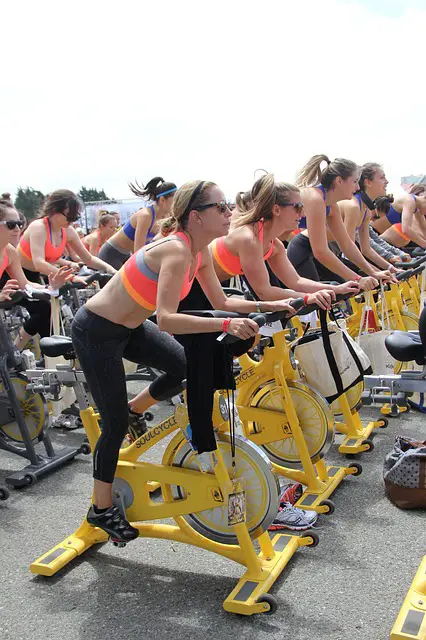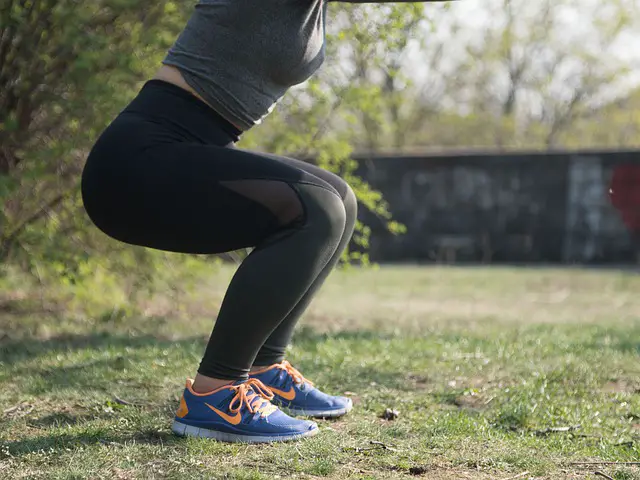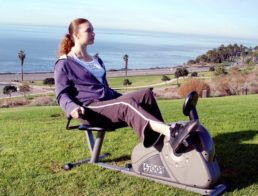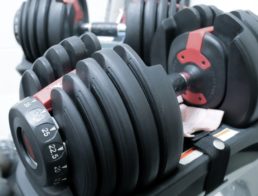Cycling is a great exercise, but are you maximizing fat burn on your rides? Whether it’s a spin class or an all-day ride on the weekends that keep you motivated, you can optimize your time in the saddle to burn fat. Before you can incinerate fat, you need a basic understanding of how your body uses energy. Keep reading to get tips on how to transform your next ride into a fat-burning adventure.
How Does the Body Burn Fat?
Your body uses macronutrients—carbohydrates, fats, and protein—as a fuel source for everything you do. For the purposes of this article, let’s focus on carbohydrates and fats, the two main sources of energy for the body.
The body requires oxygen to burn fat. Consequently, it’s used to fuel low to mid-intensity activity. Daily activities like walking, doing laundry, and cleaning keeps you in a state of slow fat burn. Exercise can burn fat too, but to burn purely fat, you need to keep your heart rate and exertion levels relatively low.
Carbohydrates get converted into glucose and stored as glycogen. When you need a quick boost of energy, the body starts burning more and more glycogen and less fat until you reach the level that it’s purely burning glycogen. Glycogen can be used as energy when there’s low or no oxygen available, like when you up the intensity of your workout. Your body stores enough glycogen to fuel mid to high-intensity exercise for approximately 90 minutes.
Slow and Steady
To burn fat, your body needs to stay at a low intensity. The longer you go the more fat you’ll burn. That long weekend right you’re considering is perfect for a long, steady fat burn. You can gauge your exertion levels with a talk test. If you can carry on a conversation relatively easily, you’re most using fat as fuel. However, if you start to run out of breath and have trouble talking, chances are, you’re burning more glycogen than fat.
Tip: The change from fat burn to carb burn is gradual. Your body will burn both fat and carbs for a time. In fact, you can burn more fat when you stay in this mid-range zone where you’re burning both fuel sources because you burn more overall fat.
Do a HIIT Workout
Image courtesy of Pixabay
The slow burn method may target fat, but it’s not always the most efficient way to get rid of extra fat. High-intensity interval training (HIIT) involves short periods of high intensity, near Vo2max effort, followed by short periods of low-intensity exercise.1 The low-intensity periods give the body time to get rid of lactic acid to allow for another high-intensity interval.
During the high-intensity interval, the body is burning glycogen not fat. Where a HIIT workout can help your fat burn is after the workout session. HIIT raises your metabolism for 24 to 48 hours after the workout. 2 The rise in metabolism causes a rise in fat burn in comparison to other types of workouts.
A session on a road or stationary bike can easily turn into a HIIT workout using timed intervals. Go your very hardest for 60 seconds, then slow things down for 15 to 30 seconds. If you’re new to HIIT training, keep your intervals short. You can also use distance or resistance (hills) to increase workout intensity. Just be sure to follow it with a short recovery period. Using your own hybrid bike will work well, or you can opt for a spin class to maximize your HIIT.
Try Fasted Training
Fasted training isn’t as well-known as HIIT, but at its most basic it’s exercising when in the fasted state (aka – You haven’t eaten overnight or for about eight hours). Your body is low on carbohydrates and, therefore, glucose and glycogen when you first wake up in the morning. If you work out when you’re in that state, the body turns to fat as an energy source. There is strong evidence that working out in the fasted states can stimulate fat oxidation and make you more efficient at burning fat and using carbs when you eat again. 3
Early birds will love this training method. All it takes is exercising first thing in the morning. You can go long, short, or use your time as a HIIT workout, but the goal is to push your body to use fat as its fuel source while you’re running low on glucose.
Go the Distance
Your body burns fat when you’re in a zone that’s 45 to 60 percent of your VO2max.4 The tricky part is, it’s difficult to know your VO2max without sophisticated equipment, so you have to guess. We’ve already mentioned the talk test, but it’s not the only way to determine where your exertion levels. You can also use your heart rate. Subtract your age from 220 and use that number as your maximum heart rate. Then, multiply that number by .45 and .60 to determine your personal fat burn zone. You need to stay in that zone so that your body can still utilize oxygen for fat oxidation.
To keep up that fat burn, go for a long, steady ride, but keep an eye on your heart rate. You can use the talk test too, by making sure you can still speak in complete sentences. Keep in mind that exercising at a lower intensity for a long time tends to increase appetite. Drink plenty of water and have a healthy snack or meal plan in place for after your ride.
Add Resistance Training
Image courtesy of Pixabay
This final tip for fat burning doesn’t actually take place while you’re pedaling. While exact numbers vary, one pound of muscle burns more calories per day than one pound of fat. More muscle means you burn more calories whether you’re cycling or sitting. 5 But how much your burn depends on your gender, weight, and your fitness level.
Add resistance training into your workout schedule at least twice a week, three times a week would be even better.6Bodyweight exercises like pushups and situps count as resistance training, as do traditional exercises like bench press, military press, squats, and lunges.
Article Sources
Healing Daily uses only high-quality sources, including peer-reviewed studies, to support the facts within our articles. Read our editorial process to learn more about how we fact-check and keep our content accurate, reliable, and trustworthy.
- Schoenfeld B. High-intensity interval training: Applications for general fitness training. Strength and Conditioning Journal. 2009; 31(6): 44-46. doi: 10.1519/SSC.0b013e3181c2a844
- Petrofsky J, Laymon M, Altenbernt L, Buffum A, Gonzalez K, Guinto C. Post exercise basal metabolic rate following a 6 minute high intensity interval workout. Journal of Applied Research. 2011;11 (two): 65-72. Published 2001. Accessed September 2, 2021.
- Proeyen KV, Szulfcik K, Neilens H, Ramaekers M, Hespel P. Beneficial metabolic adaptations due to endurance exercise training in the fasted state. Journal of Applied Physiology. 2011; 110(1): 236- 245. doi: 10.1152/japplphysiol.00907.2010
- Purdom T, Kravitz L, Dokladny K, Mermier C. Understanding the factors that effect maximal fat oxidation. Journal of the International Society of Sports Nutrition. 2018; 15 (3). Published January 12, 2018. Accessed September 2, 2021.
- LeBrasseur NK, Walsh K, and Arany Z. Metabolic benefits of resistance training and fast glycolytic skeletal muscle. American Journal of Physiology, Endocrinology, and Metabolism. 2011. doi: doi.org/10.1152/ajpendo.00512.2010
- Hunter GR, Singh H, Carter SJ, Bryan DR, Fisher G. Sarcopenia and its implications for metabolic health. Journal of Obesity. Published March 6, 2019. Accessed September 2, 2021.











